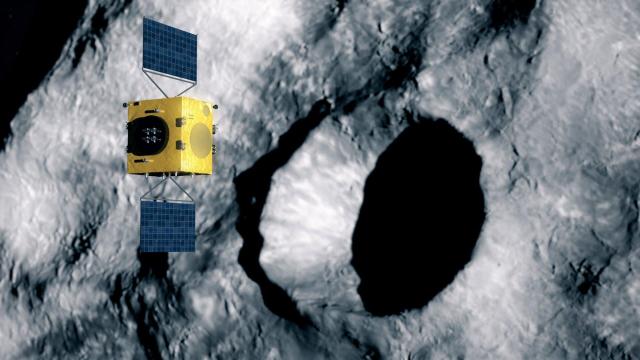The European Space Agency has approved the budget of Hera, the European component of a mission to slam a spacecraft into an asteroid.
Growing concern for planetary defence is motivating new missions to both study asteroids and potentially deflect them from a collision course with Earth. One such project, the Asteroid Impact and Deflection Assessment (AIDA), consists of NASA’s DART mission (Double Asteroid Redirection Test) plus the ESA’s Hera. Together, they will study the effectiveness of an impact to ward off an impending asteroid threat.
There are perhaps 25,000 near-Earth objects (NEOs), things that orbit the Sun on a trajectory that comes close to the Earth’s orbit. Scientists designate a subset of those as “potentially hazardous,” meaning they span 140 or more metres across and come within 0.05 AU to Earth, where 1 AU is approximately the distance between Earth and the Sun. In 2005, Congress mandated that NASA scientists should catalogue 90 per cent of these potentially hazardous asteroids by 2020, a goal that American scientists today are far from completing.
Meanwhile, scientists are working on other planetary protection initiatives, including OSIRIS-REx’s visit to the potentially hazardous asteroid Bennu. But perhaps the most drastic measure so far is AIDA.
NASA announced last year that its researchers had stared construction on their component of the mission, DART. DART will travel to double-asteroid system Didymos, which consists of an 800-metre-wide rock and a 160-metre-wide rock. The spacecraft will slam into the smaller asteroid at around 6 kilometres per second. DART’s launch is scheduled for 2021, aiming for a 2022 collision.
The ESA was then to construct a complementary mission, the Asteroid Impact Mission, or AIM, that would have launched this year and included advanced observational capabilities to study Didymos prior to DART’s arrival and monitor the asteroid during and after impact.
Unfortunately, AIM didn’t work out; Germany withdrew its portion of the mission’s funding back in 2016, so the ESA director general Jan Woerner cancelled the mission. NASA moved forward with DART, with plans to monitor the collision from the ground. The ESA proposed an alternative mission in 2018 to replace AIM, called Hera.
Hera is scheduled to launch in 2024 and arrive at the Didymos system in 2027. It will measure the impact crater produced by the DART collision and the change in the asteroid’s orbital trajectory. Its payload tentatively includes two small satellites called cubesats that will study the smaller asteroid up close and potentially land on it.
The ESA’s governing body gathered in Spain last week to decide on which proposals they’d move forward with and fund. Its member states agreed to earmark 12.5 billion euros over the next three years, nearly all of the money requested, for missions. This included approval for Hera, which the ESA announced in a cringe-y press video (yes, it features Brian May, the guitarist from Queen who is also an astrophysicist).
Other missions to receive funding include space transportation and telecomm programs, as well as initiatives related to Mars sample return ant Lunar Gateway.
